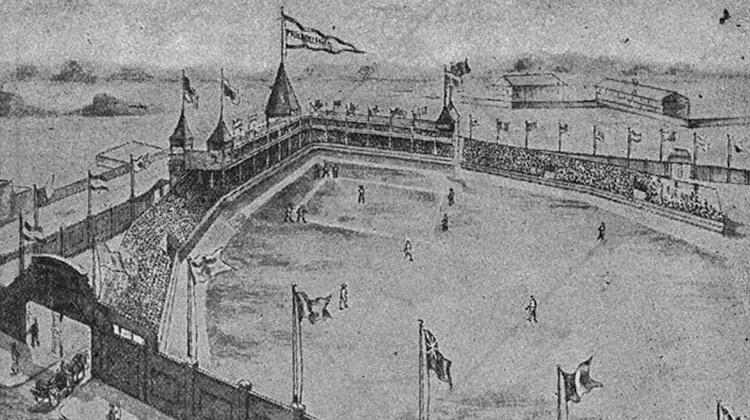
The 1883 baseball season was a period rich with action and developments, both on and off the field, as the sport continued to evolve and grow in prominence.
In the National League, the Boston Beaneaters (now the Atlanta Braves) took the pennant, dethroning the Chicago White Stockings, who had secured the title for the previous three years. The Beaneaters were led by manager John Morrill and featured a strong pitching staff, including Jim Whitney and Charles Radbourn.
The American Association’s championship was won by the Philadelphia Athletics, who had an outstanding season with a record of 66-32. Managed by Lon Knight, the Athletics showcased great balance and team play. The competition between the National League and the American Association continued to spark interest in the sport, and the rivalry between the leagues added a new layer of excitement for fans.
On the player front, one of the season’s highlights was the performance of Charles Radbourn of the Boston Beaneaters, who won an astonishing 48 games. His durability and skill on the mound were remarkable, and his achievement stood as one of the single-season records for victories by a pitcher.
Another noteworthy aspect of the 1883 season was the opening of the Polo Grounds in New York, one of baseball’s most iconic stadiums. As the home field for the New York Gothams (later renamed the Giants), the Polo Grounds became synonymous with baseball history and was a symbol of the growing popularity and commercial success of the sport.
Additionally, 1883 marked the beginning of the “Black Ink Test” statistic, which measures how often a player leads the league in various statistical categories. This innovation was a precursor to the analytical approach that would later become a fundamental part of baseball.
However, tensions between players and owners persisted, particularly over the reserve clause and salary issues. The seeds of discontent sown in previous years continued to grow, hinting at the labor struggles that would become a significant part of the game’s future.
In summary, the 1883 baseball season was filled with remarkable performances, critical developments, and the emergence of iconic venues like the Polo Grounds. It was a time of growth for baseball as a national pastime, reflecting a sport in transition. The year’s events contributed to shaping the modern game, and the drama on the field was matched by the complexities and challenges off it. The landscape of baseball was evolving, and the 1883 season was a vital chapter in that unfolding story.
National League
Pitchers
Old Hoss Radbourn
Jim Whitney
Starting lineup
Dan Brouthers (1B)
Jack Farrell (2B)
Charlie Bennett (C)
Jack Glasscock (SS)
George Gore (OF)
Ezra Sutton (3B)
George Wood (OF)
Jim O’Rourke (OF)
Bench
Roger Connor
Buck Ewing
Fred Dunlap
Jack Burdock
Hardy Richardson
American Association
Pitchers
Tim Keefe
Will White
Tony Mullane
Starting lineup
Ed Swartwood (1B)
Pete Browning (OF)
John Richmond (SS)
Hick Carpenter (3B)
Charley Jones (OF)
Pop Smith (2B)
Jim Clinton (OF)
Rudy Kemmler (C)
Bench
Harry Stovey
Candy Nelson
John Reilly
Bill Gleason
Mike Moynahan
Jack Gleason